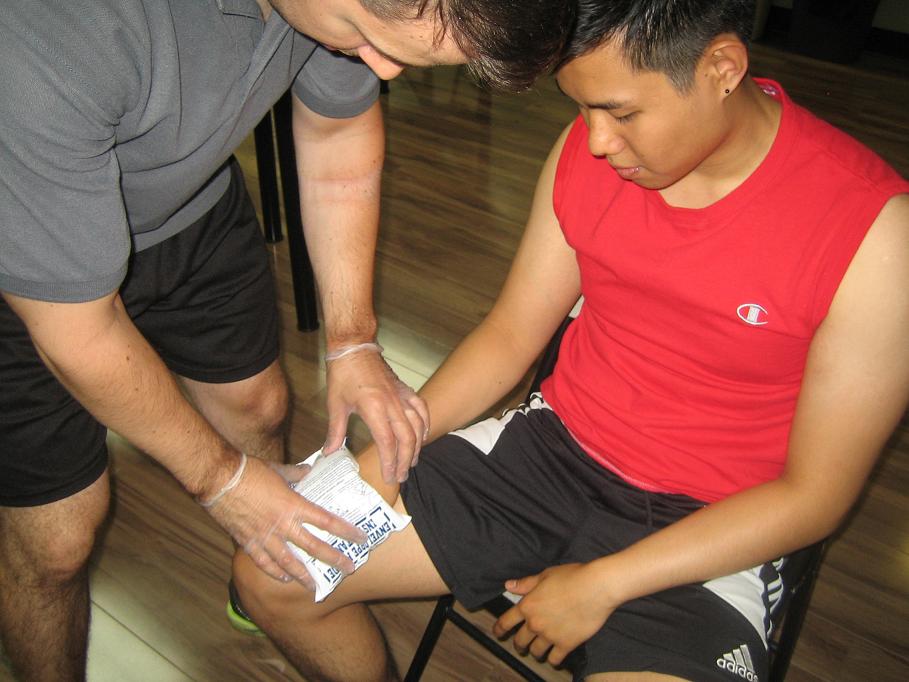A hack wound is a non-medical (“layman”) term used to describe cuts or wounds caused by irregular blows. Most often, the blows are caused by sharp objects such as knives, ice peaks, etc. Hack wounds may range from mild to severe, depending on the depth of the cut that may result to hemorrhage. This article on first aid management of hack wounds is for learning purposes only. To learn to recognize and manage hack wounds and other potentially life-threatening injuries enrol in first aid training with a provider near you.
Rest
Accidental or sudden hack wounds may be a cause of panic and shock. Resting the patient and the injured body part is especially important to minimize blood flow to the cut area and prevent excessive blood loss. The first thing a rescuer should do first for a hack wound is let the patient sit down in a calm and comfortable area, and help them to relax. Ensure that the patient rest’s the injured body part.
Compression
Once the patient is resting, compress the cut using sterile gauze or any clean cloth. Never remove soaked dressing, but instead, place more gauze or add additional cloth(s) while applying pressure continuously.
If the sharp object is still embedded in the body part, do not attempt to remove it as it will only cause more blood loss. The goal in this type of situation is to immobilize the impaled object so that it won’t cause further injury to the tissues during mobilization. After immobilization, bring the patient to the nearest health facility.

Elevate
While compressing the cut, elevate the injured body part at the same time to promote blood return to the heart and minimize further bleeding. If the trunk area is involved, the legs may be elevated to promote venous return and prevent hypotension.
Ice application
When available, blood loss can further be minimized through cold compress. Application of ice can help in blood constriction to prevent further blood loss.
Other Management
Aside from bleeding, pain and infection should also be minimized. As much as possible, washed, clean, or gloved hands should be used in handling hack wounds. Once bleeding has stopped, you can wash the hack wound with soap and water. Afterwards, an antibacterial cream can be applied to the wound. Analgesics such as acetaminophen (Tylenol) can be taken for pain. Open hack wounds should be dressed regularly and aseptically. Monitor the patient for signs and symptoms of infection such as pus draining from the wound, fever, swelling, and redness. If any of the above is noted, immediately seek a primary care physician for a consult.
Reference:
Medscape. Wound Care Treatment & Management. Retrieved on July 5, 2014 from http://emedicine.medscape.com/article/194018-treatment

